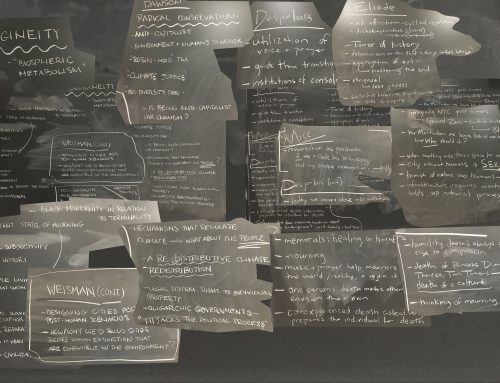Charlie Magun
Daryl Pazer
Sintra Martins
Terminality
25 September 2018
Hospice Care and Terminality: Timing Death
There are a multitude of problems posited by Bethne Hart in her essay “Whose Dying?”, on ideas of what is a “good death” in western tradition, namely palliative care. The problem of note is in the making of a “good death”, which requires the obedience and ambivalence of the dying patient. Hart establishes three kinds of death; the first is a spiritual one, wherein the condemned does not, “embarrass others nor evoke strong emotions but takes place privately and secretly; a death that can be tolerated by the survivors,” (66). The second, is a medical one, wherein the dying makes arrangements as to what will happen to their loved ones, their possessions, even their body, when they ultimately die. This kind of death is rooted in the social structures, which require complicity, and where, “angry, non-accepting and non-compliant patients become deviants who are violating the established norm,” (69). Finally, she establishes what is considered the “good death”, which underlies the foundation of hospice care, which is in direct competition with “the maintenance of the organization’s vested interests of cost effectiveness, administrative imperatives, and the routinization of care,” (70).
Firstly, it is necessary to criticize the belief that the process of dying is an observable fact, “with each of the stages characterized by observable behaviours and emotions,” (68), as the process of dying is an individualized, subjective experience, which is, “highly influenced by social relationships and cultural, religious, and historical factors,” (Smith, 2018).
Furthermore, the categorization of death into stages assumes a chronological timeline, (wherein if symptom X is exhibited now, the patient will be dead by 10pm tomorrow night, etc…). In order to control the process of death, which is ultimately one of the conscious mind’s greatest fears, we have created a serialized checklist, which precludes any possibility of grey area; “in the 1970s, a distinction was built in oncology between terminal and advanced cancer, the latter being construed as somehow still susceptible to interventions that could lead to the prolongation of life and exclude death from the frame,” (Farman, 100). However, identifying whether a patient has enough time to intervene and even how to communicating these life expectancy estimates is often difficult. When discussing life expectancies with patients, it has been found that some oncologists often stress the, “indeterminacy of the estimates for the individual, rather than their imprecision or unreliability,” (Henselmens, 2017). The applicability of the “good death” is ultimately also tied up within these distinctions between terminality and estimated life expectancy.
Works Cited
Farman, Abou. 2017. “Terminality.” Social Text.131.35 (2).
Hart, Bethne, Peter Sainsbury and Stephanie Short. 1998. Whose dying? A
Sociological Critique of the ‘Good Death’. Mortality, 3(1):65-77.
- Henselmans, E.M.A. Smets, P.K.J. Han, H.C.J.C. de Haes, H.W.M.van Laarhoven,
How long do I have? Observational study on communication about life expectancy with advanced cancer patients, Patient Education and Counseling, Volume 100, Issue 10,
2017, Pages 1820-1827,ISSN 0738-3991,https://doi.org/10.1016/j.pec.2017.05.012.
(http://www.sciencedirect.com/science/article/pii/S0738399117302847)
Smith, A. K. and Periyakoil, V. S. (2018), Should We Bury “The Good Death”?. J Am Geriatr Soc, 66: 856-858. doi:10.1111/jgs.15321

Recent Comments